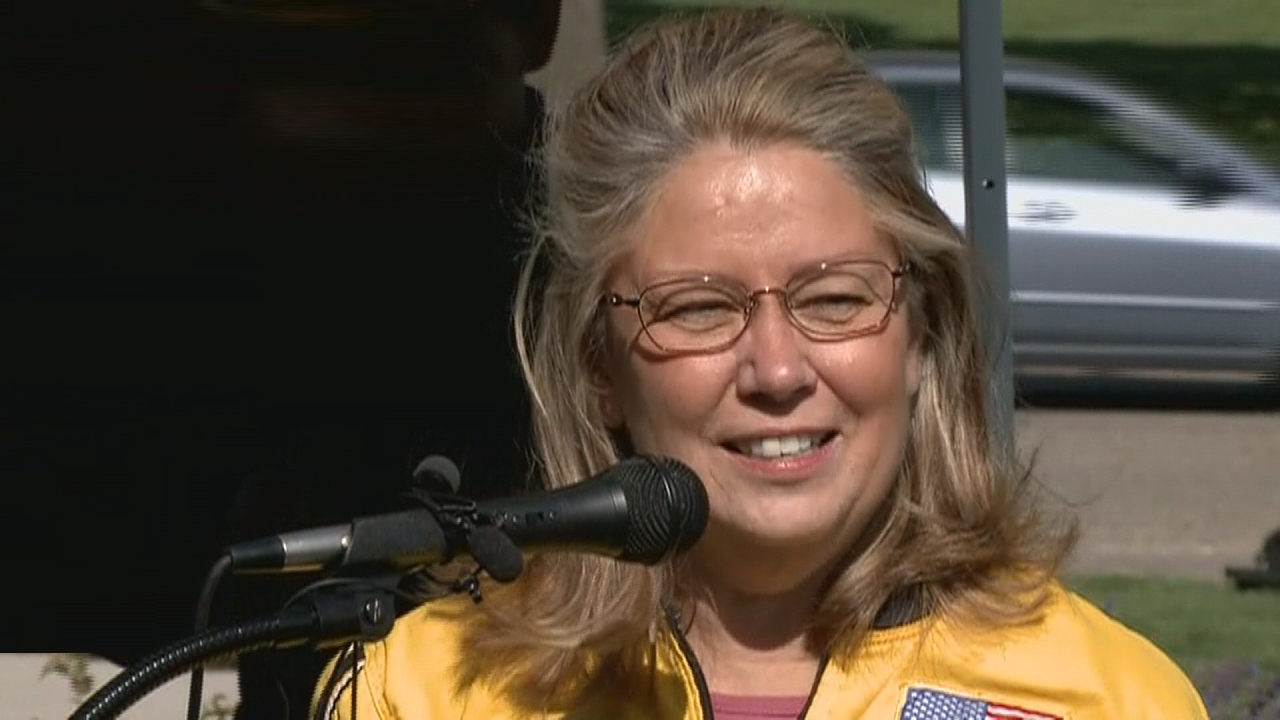ST. PAUL, Minn. -- Lt. Gov. Yvonne Prettner Solon announced Tuesday that she will not join Gov. Mark Dayton's ticket again when he seeks reelection later this year.
She thanked Dayton for allowing her to focus on issues she cared about, but also lamented that she had not been as involved in formulating policy as she'd hoped to be.
Prettner Solon, a former state senator and Duluth City Council member, was viewed as a key political asset for Dayton during his first run in 2010 because of her strength in the northeast part of the state.
"She has a strong constituency from the Iron Ranger and from the Duluth area, a constituency very vital to the governor's election four years ago and one that's clearly going to be very critical to his reelection at this time," David Schultz, a Hamline University professor and political analyst, told KARE.
When Dayton introduced her as his running mate in May of 2010, he summoned the name of the Prettner Solon's late husband Sam Solon, who was a legendary political figure in Minnesota.
Few Defined Duties
In her tenure as lt governor, Yvonne Prettner-Solon has stayed busy. Her public work has included initiatives for Minnesota's aging population and persons with physical and mental challenges. She has regularly held holding office hours in different parts of the state to field concerns from constituents, and she's represented the governor's office in many ceremonial functions such as fishing openers.
Prettner-Solon most recently has headed the Capitol Security Commission, a panel that has wrestled with setting new rules for firearms in the Capitol building, as well as issues such as security staffing and metal detectors.
But, by and large, the Minnesota State Constitution has little to say about the role of the Lt. Governor other than to succeed the governor if that office is vacated, or stand in temporarily if he or she can't perform the duties of the chief executive.
"Most people who become lieutenant governor hope they're going to be valuable, hope in some way they're not going to be a figurehead and not just go off to funerals," Schultz said.
"But it's often times the case that the reason why a person's the lieutenant governor is for political reasons, that is geographic balance or favors, political patronage."
Carol Molnau was the first lieutenant governor to take on an additional assignment, when Republican Gov. Tim Pawlenty appointed her as transportation commissioner in 2003. She did both jobs for one salary, but after five years in the dual role, Molnau was effectively fired from the transportation job when Democrats in the State Senate voted against her confirmation as commissioner.
"The lieutenant governor's role has varied with governors, in terms of giving more responsibility or less responsibility, but that's purely discretionary on the part of whoever the governor was," Schultz explained.
Minnesota is one of 42 states with lieutenant governors, but the voters would have to pass a constitutional amendment to eliminate the position. The last time the idea came up at the State Capitol it stalled in committee, with lawmakers from both sides of the aisle taking shots at it.
"The reason there was bipartisan rejection of that idea was because the lieutenant governor's position is really viewed as a source of political patronage more than anything else," Schultz asserted.
The position pays $78,000 per year, but Schultz said that when factors in staff the cost of having a lieutenant governor is closer to $250,000 per year.
Lt. Governor factoids
The first 41 lieutenant governors in history were men. The past six have been women. Marlene Johnson was the first female, followed by Joanell Dyrstad, Joanne Benson, Mae Schunk, Carol Molnau and Yvonne Prettner Solon. The last male lieutenant governor was Lou Wangberg, who served under Gov. Al Quie from 1979 to 1983.
For most of Minnesota's history candidates for lieutenant governor ran alone on their own ballots. Since 1974 they've been elected on a ticket as running mates to the winning gubernatorial candidates.
Democrat Rudy Perpich spanned both eras, being elected lieutenant governor by himself in 1970 and then running as Wendell Anderson's running mate in 1974.
In all, nine of Minnesota's 47 lieutenant governors have become governor.
Three succeeded governors who died in office. Four succeeded governors who resigned to take other jobs, and two ran for governor while serving as lieutenant governor and won.
Upwardly Mobile
Henry Swift succeeded Alexander Ramsey in 1863 when Ramsey resigned to go to Congress.
David Marston Clough served as lieutenant governor from 1893 to 1894, then ran for the top spot and became 13th governor. He served in that post from 1895 to1899
Adolph Olson Eberhart was lieutenant governor from 1907 to 1909 and succeeded Gov. John Albert Johnson in 1909 when Johnson died in office. Then he won the seat on his own merits two more times.
Joseph Alfred Burnquist served as lieutenant governor 1913 to 1915 and succeeded Gov. Winfield Scott Hammond in 1915 when Hammond died in office. Then won seat two more times on his own.
Hjalmar Petersen was lieutenant governor from 1934 to 1936, then succeeded Gov. Floyd B. Olson, when Olson died in office in 1936. He chose not to run for governor in 1936. He tried twice later, but lost both times to Harold Stassen.
C. Elmer Anderson was lieutenant governor twice and later in life ran for governor on his own and won. He was lieutenant governor the first time from 1939 – 1943, and then again from 1945 to 1951. So he captured the lieutenant governor's office in elections in 1938, 1940, 1944, 1946, 1948 and 1950.
Anderson became governor in September of 1951 when he succeeded Gov. Luther Youngdahl, who resigned to become a federal judge. Anderson won the governor's office in his own right in 1952 and served until January of 1955.
Edward Thye was elected lieutenant governor in November of 1942, then succeeded Gov. Harold Stassen in 1943 when Stassen resigned to join the US Navy. Thye was elected governor in his own right in 1944.
Karl Rolvaag served as lieutenant governor from 1955 to 1963. He ran for governor in 1962 and beat Elmer L. Anderson, in what was the tightest statewide election ever. Rolvaag took office in March of 1963, at the end of lengthy recount. He served until 1967.
In 1976 Lt. Gov. Perpich succeeded Anderson, who resigned to position himself to be appointed to the US Senate to replace Walter Mondale, who had just been elected Vice President. The backlash from that maneuver caused Perpich and fellow Democrats to lose to Republicans in the 1978 election.
But Perpich came back in 1982 and recaptured the Governor's office.


